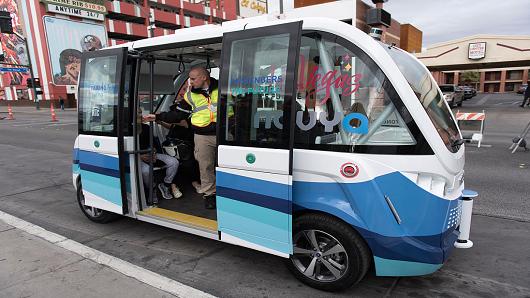Self-driving shuttle in fender-bender crash two hours after its Las Vegas launch

Humans appear to be the biggest danger to driverless cars, as a human-driven lorry ploughed into a self-driving shuttle mere hours after its launch.
The autonomous shuttle was developed by French company Navya and set out on its maiden journey in Las Vegas’ so-called Innovation District tech hub. But within two hours it ended up being involved in a minor crash when a lorry with a human behind the wheel backed into it when carrying out an illegal reversing manoeuvre.
The shuttle detected the danger the lorry posed and stopped as its sensors warned it of the obstacle. But the lorry, which was not equipped with such sensors, carried on coming and hit the shuttle. No one was harmed in the collision.
“The shuttle did what it was supposed to do, in that its sensors registered the truck and the shuttle stopped to avoid the accident,” Las Vegas city authorities said in a statement to The Guardian. “Unfortunately the delivery truck did not stop and grazed the front fender of the shuttle. Had the truck had the same sensing equipment that the shuttle has, the accident would have been avoided.”
The shuttle crash isn’t the only time a driverless vehicle has been involved in a crash where humans are to blame; Google’s driverless car testing has seen its cars get cut up and experience fender-benders due to the erratic behaviours of human-driven cars.
While such collisions tend to grab headlines, overall a lot of evidence suggests that fully-autonomous driving systems are better and safer at driving than many human motorists, thanks to their bevy of sensors and 360 degree environment awareness.
Related: Death by driverless car – who’s to blame when it goes wrong?
Would you put your trust in a self-driving car? Let us know on Facebook or Twitter.

